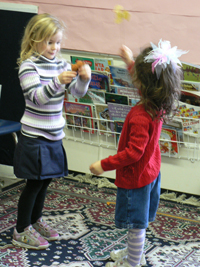The
Working Narratives
Narrative Perception
On
this site you'll find info on recent and past talks, papers, & research
including:
History of children's narrative
from 1000
Characteristics of narrative engagement in print & in games such as interactivity & agency
Children's development & their changing perception of narrative once they enter school
Myth
of Narrative Climax: the Subjugation of Narrative Structure
Imaginative approaches to literacy in the 1700s
Disney stories from the 1920s to 2000
And
other topics related to narrative, interactivity & new media.
This site is always under construction!
Traditional narrative structure evolved as a combination of Aristotle’s narrative arc of beginning, middle, and end, and Freytag’s climactic plot. It is a recent development and is neither traditional nor classic. Other narrative structures, such as epic, have adapted and endured for considerably longer within the 3000 years of narrative development, and better reflect the process of life. However, English Arts curriculum in schools establishes the traditional structure as the norm beginning in kindergarten and then throughout elementary and secondary school. It continues to be acknowledged as the norm in colleges and universitie as well as in the day-to-day writing of mainstream life.. This norm also guides research in a range of disciplines such as education and games that explore narrative use. There are three reasons for the reification of traditional narrative structure as a narrative norm: literary critics need for a standard against which to compare new literary works (late nineteenth century), educational institutions requirements for standardized curriculums (early twentieth century), and the naturalization of these conventions (throughout the twentieth century).
When
such a structure is adopted as the norm for narrative, the implication
is that all narrative requires rising tension and high points, or climaxes,
to be satisfactory. This is, however, only the case in certain types
of narrative. The different approaches to structure that have been used
throughout narrative’s history, such as episodic, entrelacement,
and frame, and the modernist and post modernist experimentation since
this model evolved, are not reflected in it. Nevertheless, it continues
to dominate as a norm for all narrative in each new media that is developed.
Part of the
reification process is schools Language Arts curriculums which introduce
traditional narrative structure at kindergarten and then continually
reinforce its use. The paper One Narrative Norm - North American
Language Arts Curriculum provides examples of curriculum approaches
across Canada and the U.S.
One
Narrative Norm - North American Language Arts Curriculum
The study The dynamic of young children's emerging narrative process
provides an observation of the change which occurs in introducing
children to narrative between pre-school and kindergarten.
The dynamic of young children's emerging narrative process
(Coming soon)
Photos
from top:
Using a fairy wand in retelling a story in preschool
Kindergarten teacher's chart of the story line for A Snowy Day
Kindergartener's version of story line for A Snowy Day
Kindergarteners making settings for the story, A Snowy Day




You
have reached the website of Krystina
Madej
Comments and questions are welcome. Forward to ksmadej@sfu.ca.
This page last updated January 2010.
Copyright Krystina Madej 2000 - 2010
